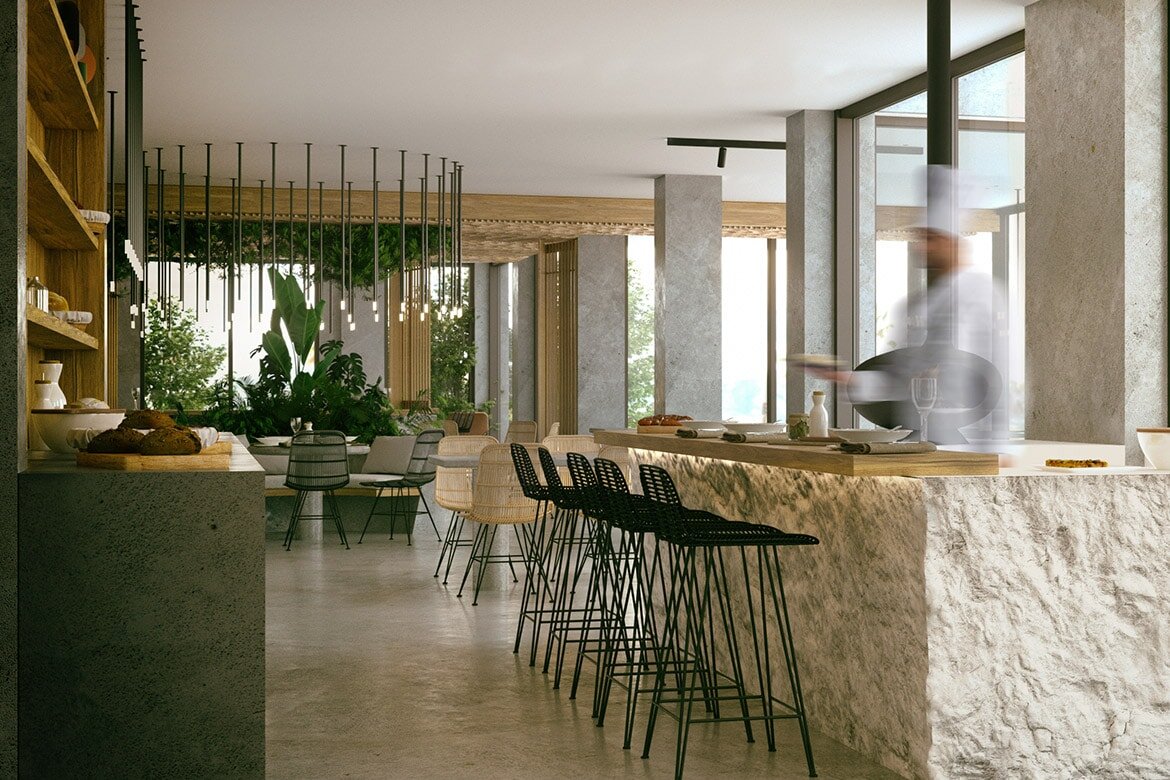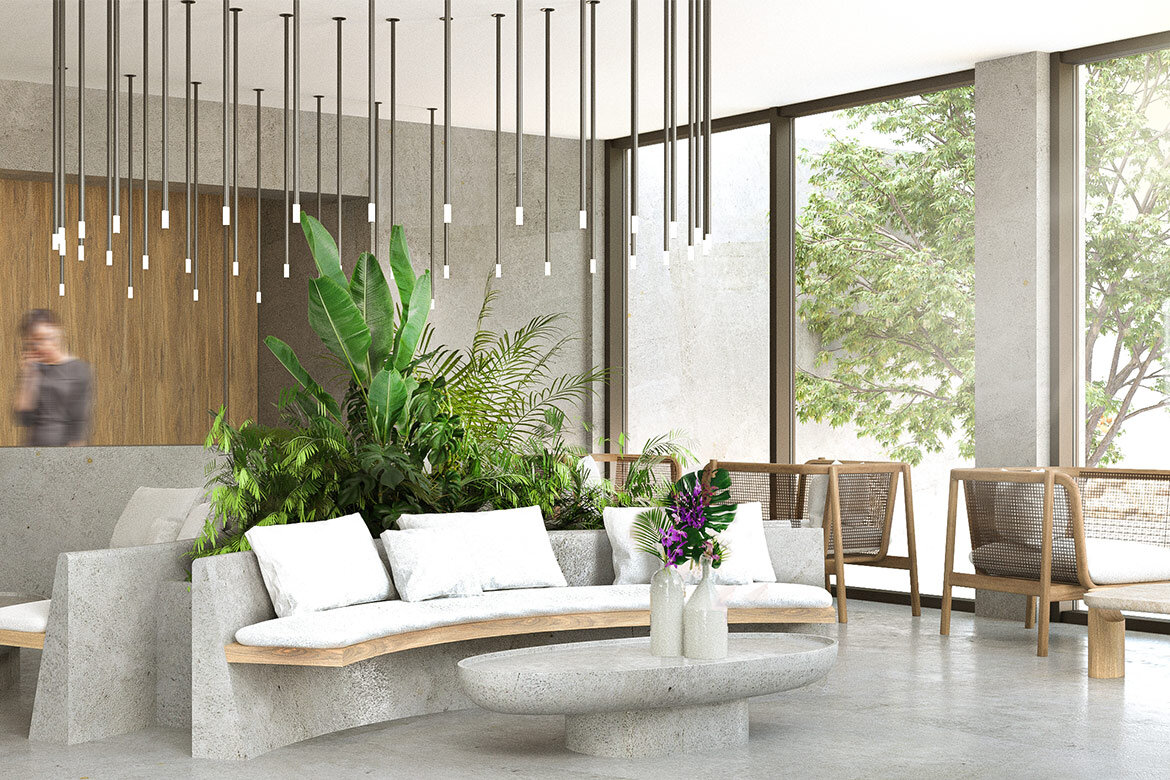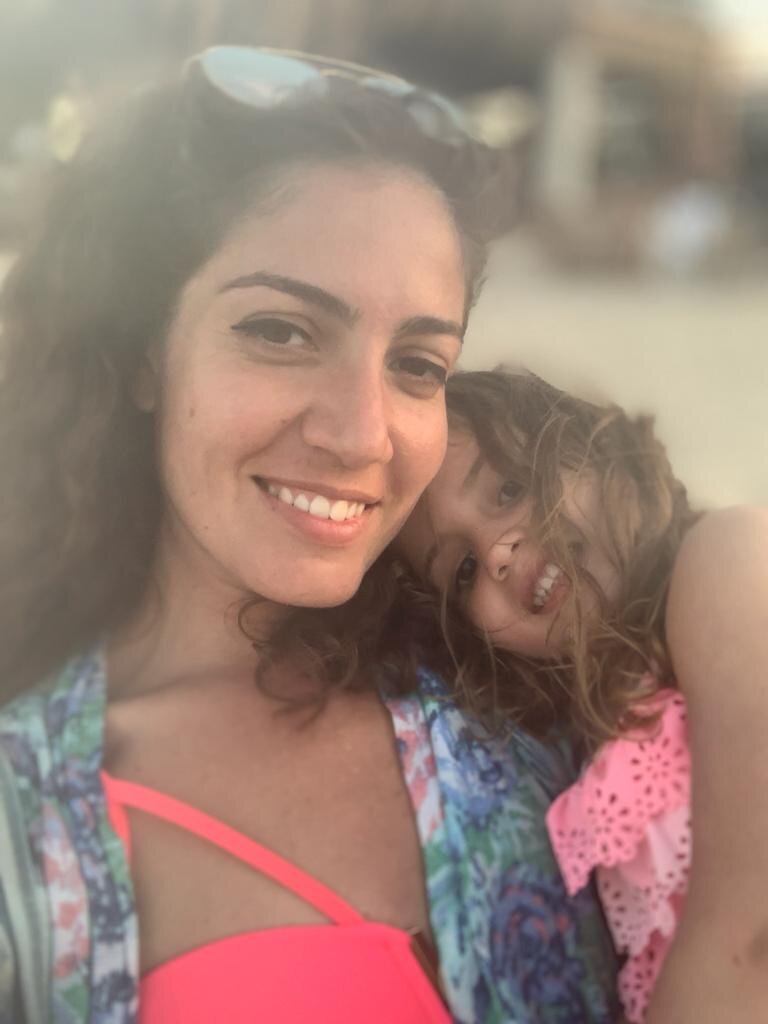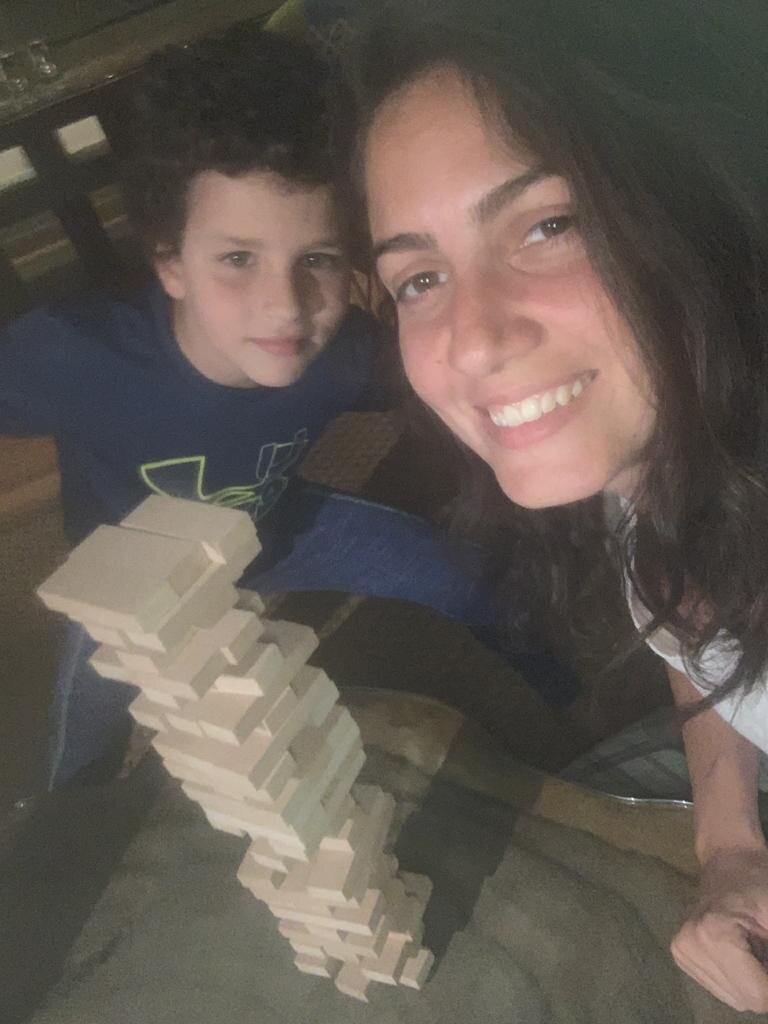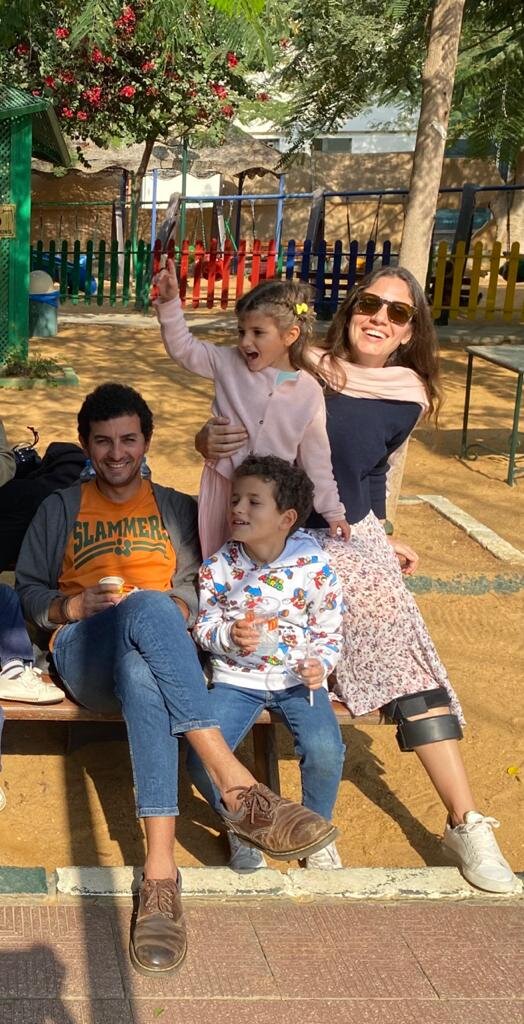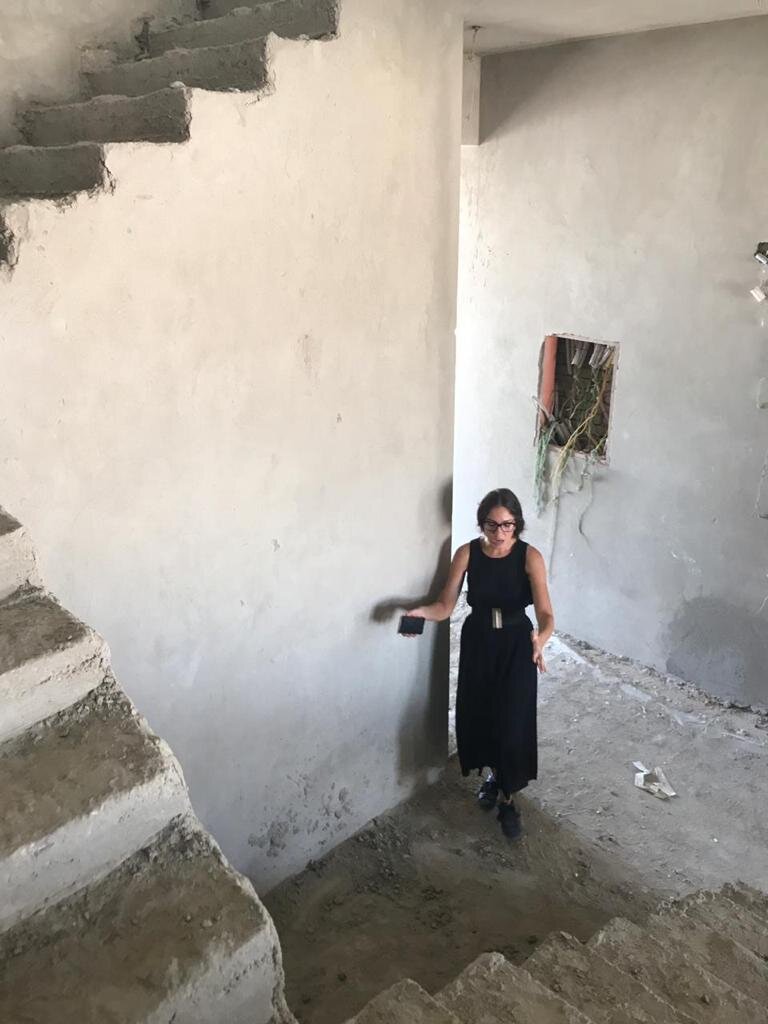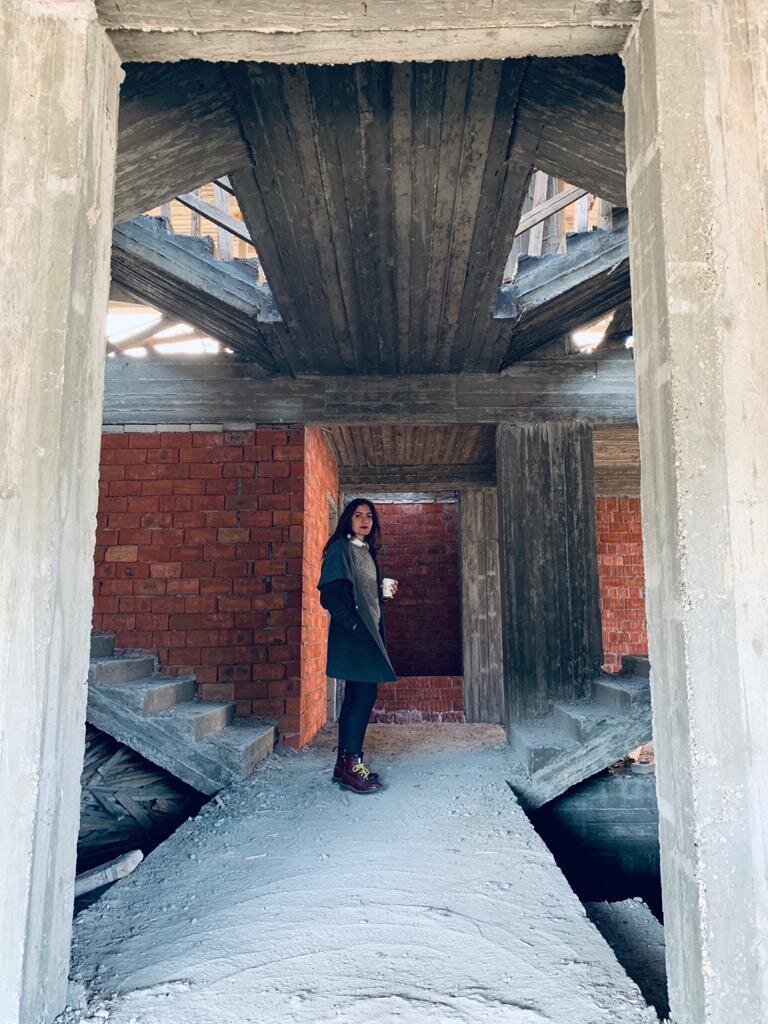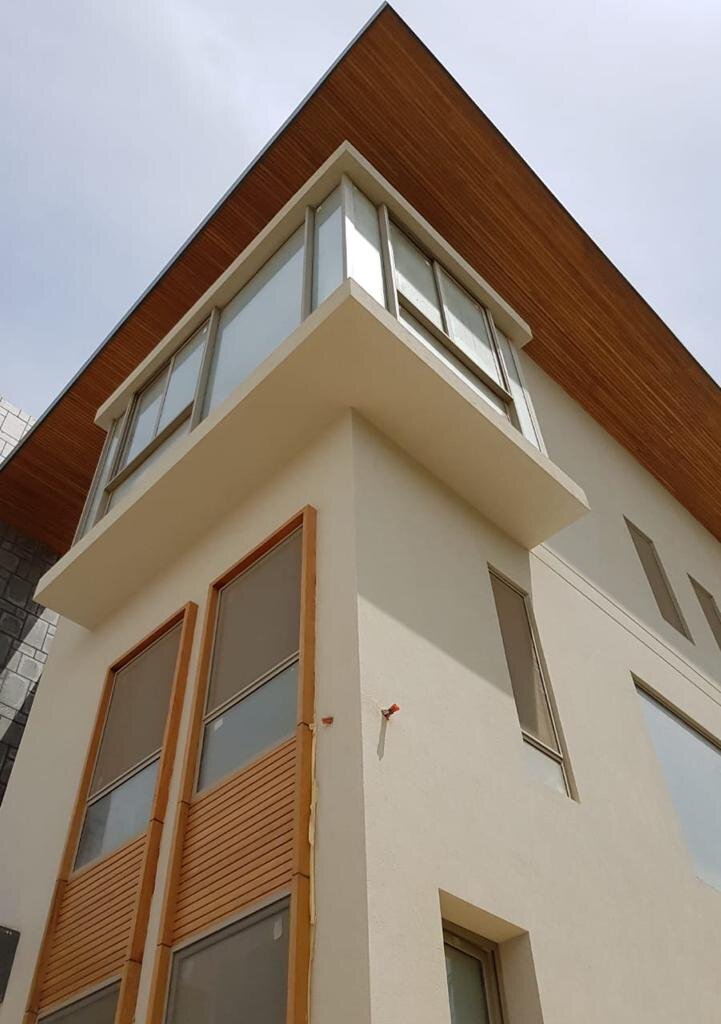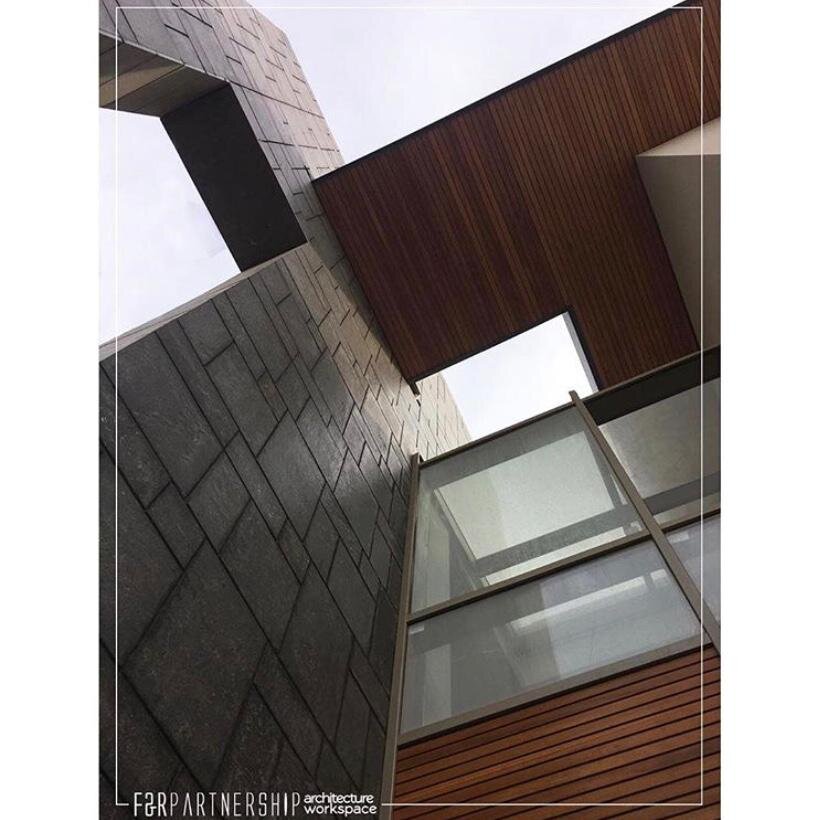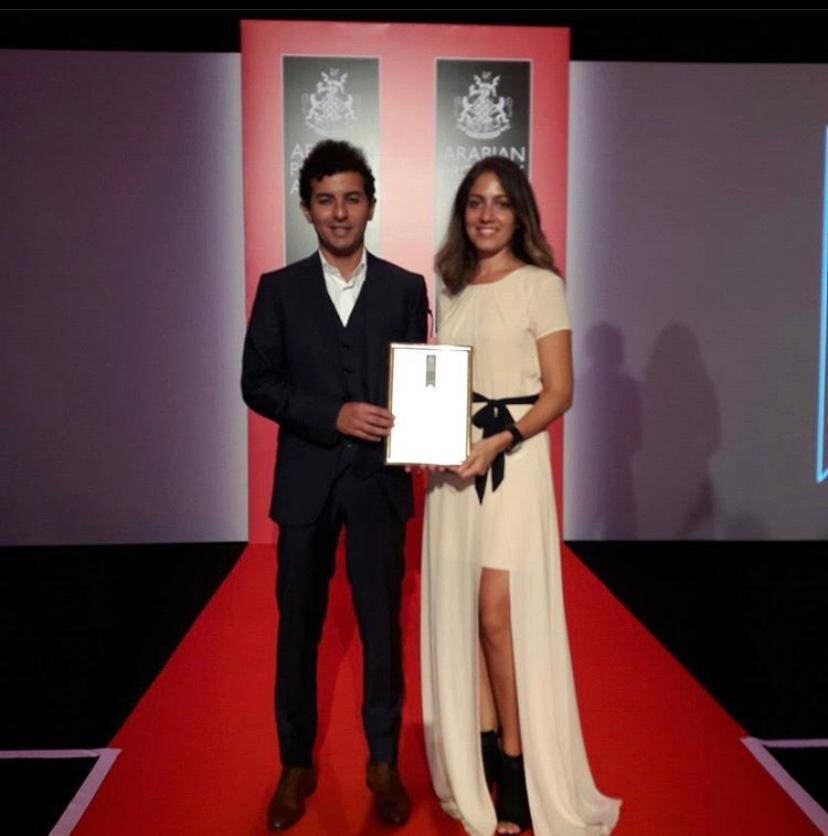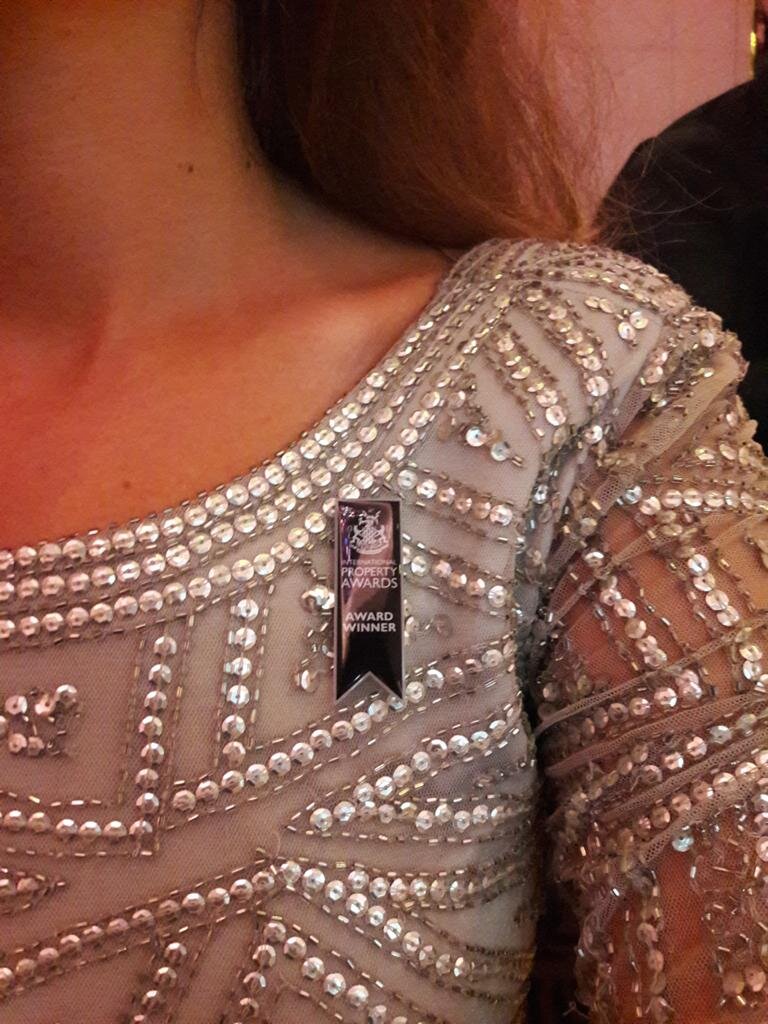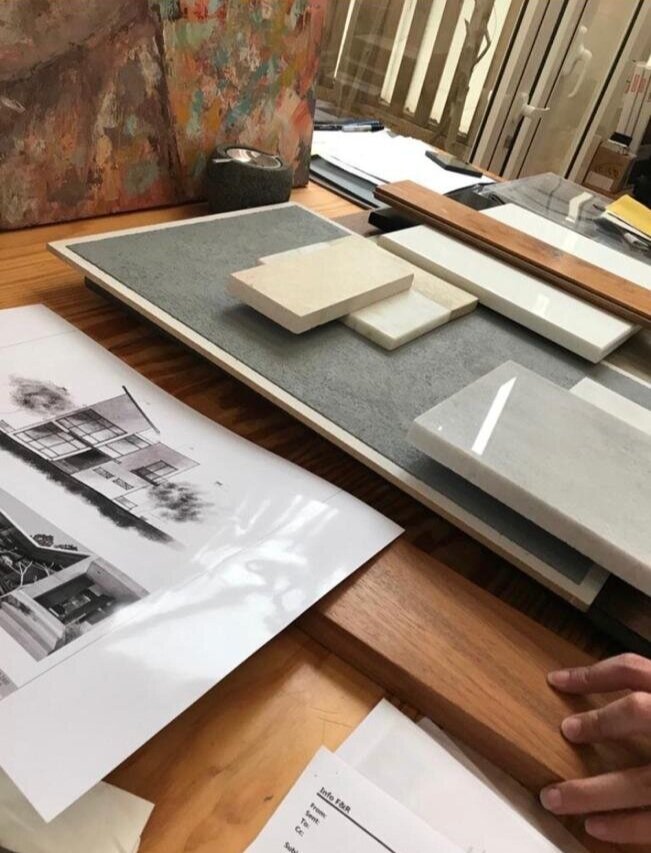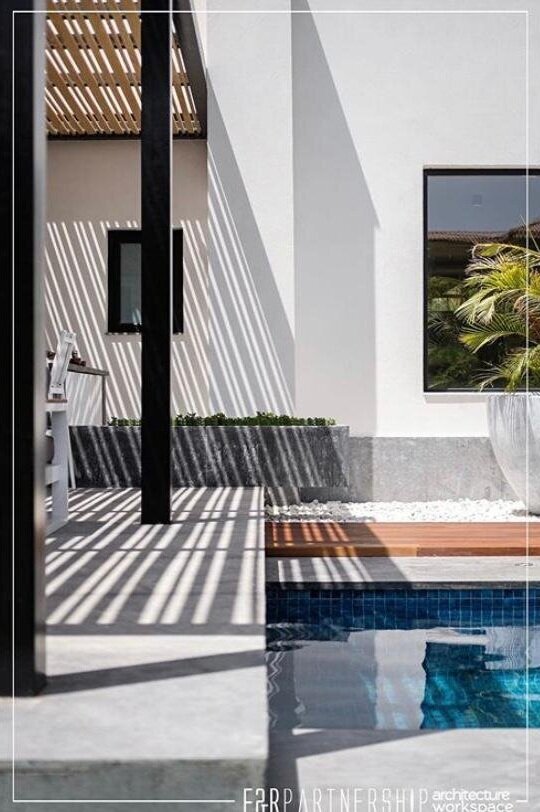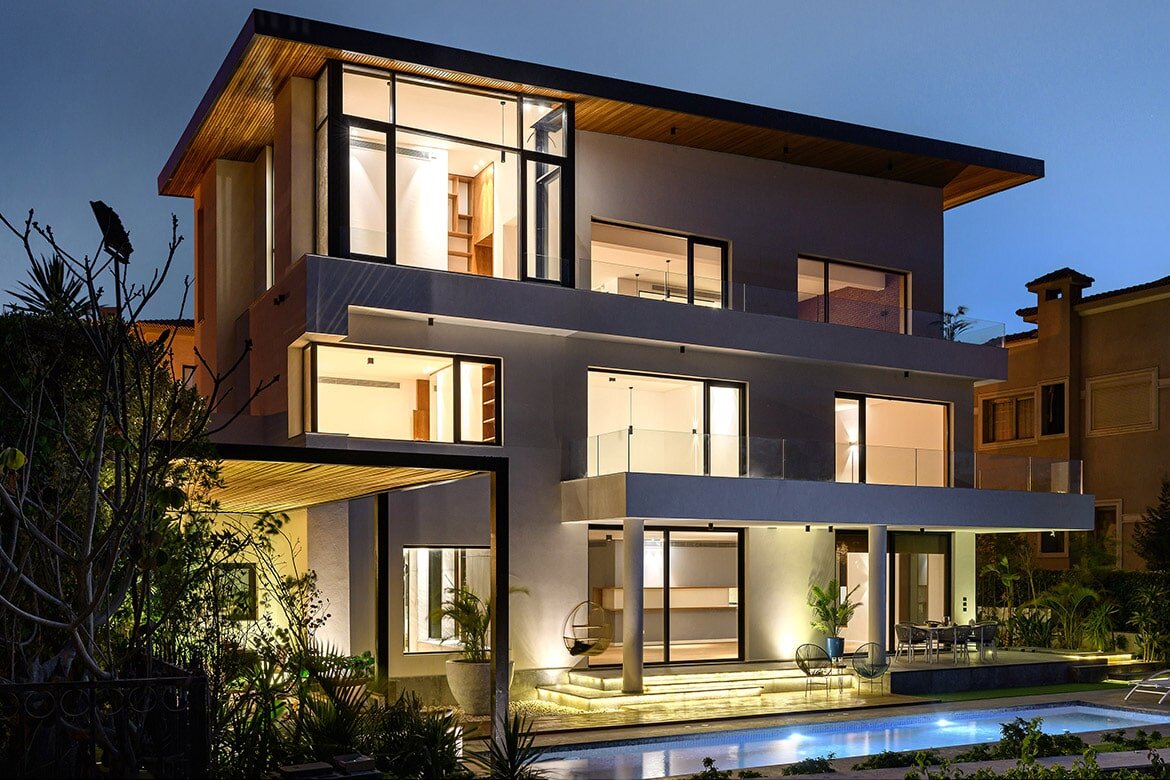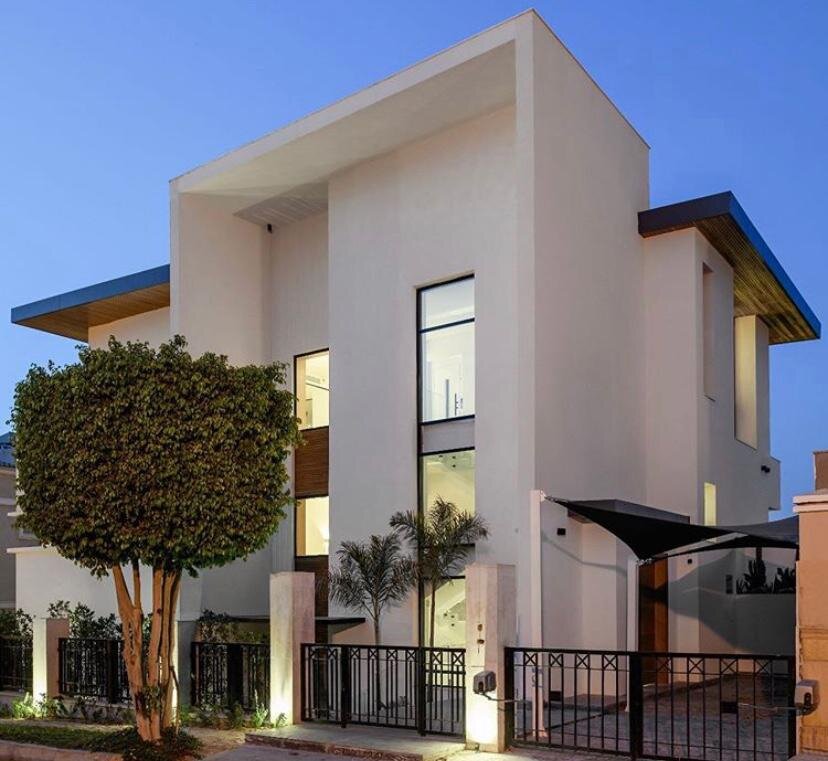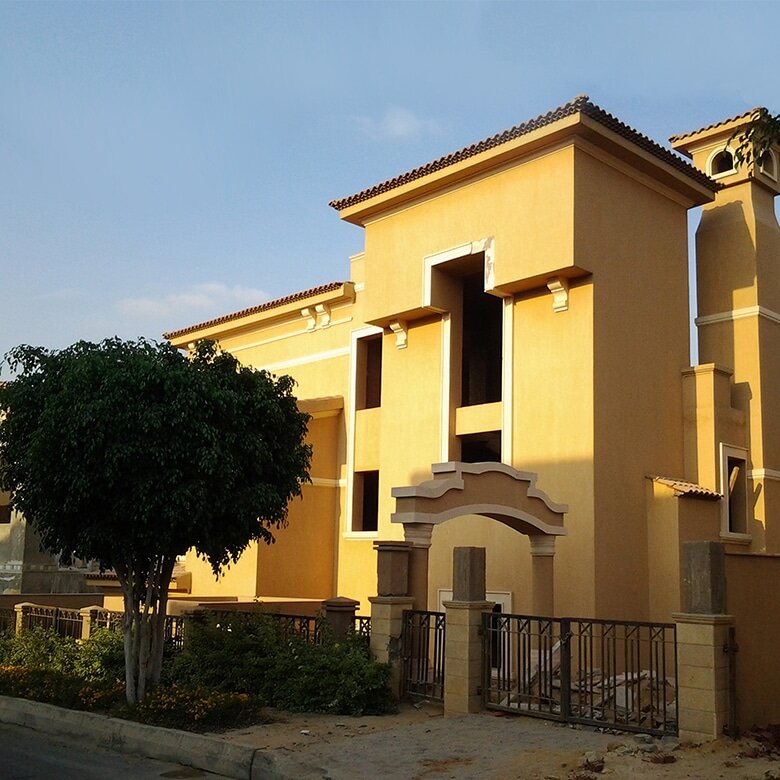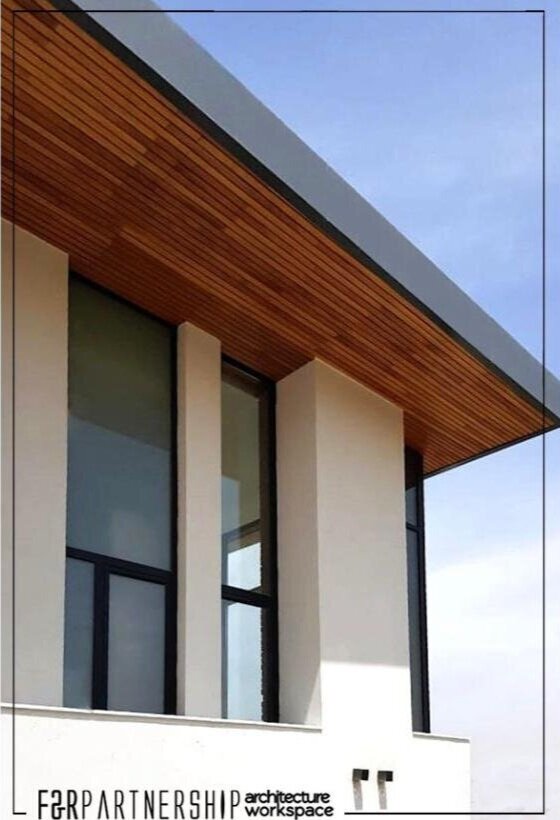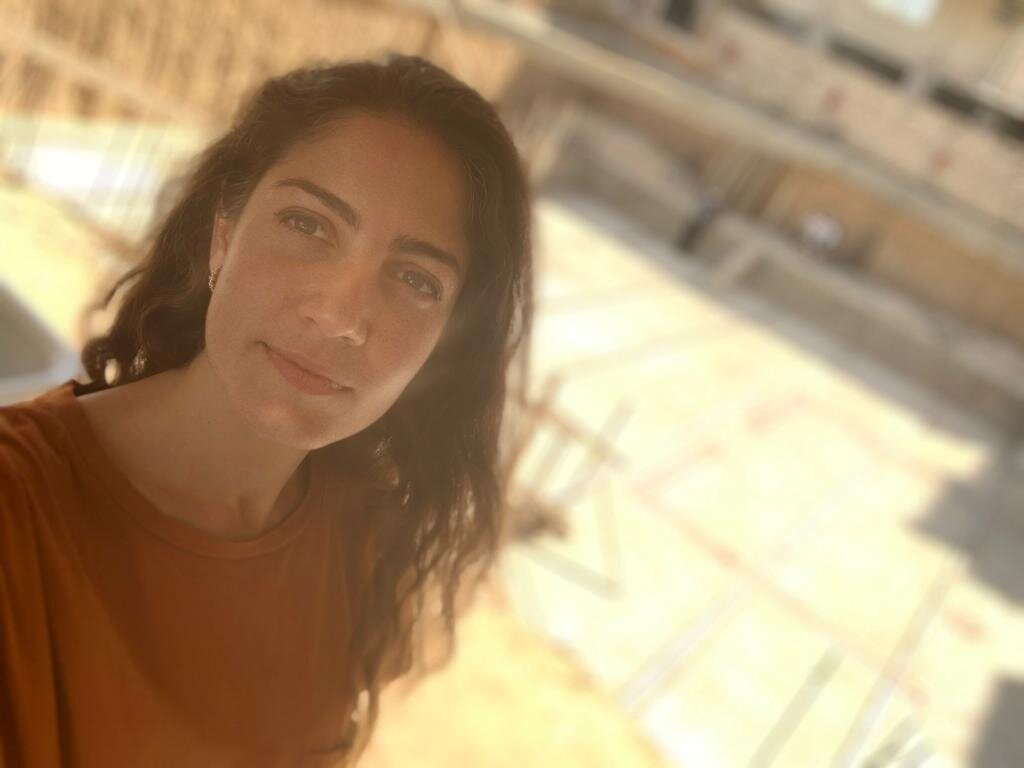MALAK RASHAD
Portrait courtesy of Malak Rashad.
Malak Rashad is the Co-founder and Design Director of F&R Partnership. A graduate of Cairo University's Faculty of Engineering in 2006 and an award-winning Architect since 2017, Malak is reputed for minimalism and purity in her designs as well as creating spaces that feel open and have a strong connection with nature. After gaining work experience on various projects such as the Interior design of the American University in Cairo’s Staff and President’s Offices and Conference Rooms, Tamarai Bar and Restaurant, TBS Bakery, and various residential villas and buildings with prominent Egyptian design studios such as Shahira H. Fahmy Architects and Progressive Architects, she established F&R Partnership with her partner, Ahmad Fayyad, in order to take her design aspirations to new heights. She specializes in hospitality and residential architecture and interior design. Malak has worked on interior design for projects such as the hotel apartments of Creek Boutique Hotel in El Gouna, Tabla Luna Restaurant, and others. Her clients range from private villa owners to residential community developers such as Orascom, Emaar, and Inertia Properties. Malak’s mission is to create healthy, smart, and highly efficient spaces that are nature-filled, timeless, and full of positive energy thereby enhancing people's quality of life.
Creek El-Gouna Restaurant. Images courtesy of Malak Rashad.
A Wellness Approach to Architecture
What inspired you to study architecture?
Will I regret this when I’m forty? If I wake up one day, forty years old, and look around, will I like what I’ve made of my life, or will I think how on earth did I end up here! When I first joined Cairo University I was studying to become a communications engineer. This was the natural path for me since I’ve always stood out when it came to the sciences of maths and physics. However good I was at them, I found them quite boring. I was exposed to the world of Architecture through friends who were already a couple of years ahead of me and immediately I was hooked. I did not know if I was talented or not back then. But to me, there was one question to ask. Will I regret this when I’m forty? Architecture seemed intriguing and interesting and even though I had no idea whether I was talented or not, I was drawn to discover and pursue it from that moment on. We learn about long-gone civilizations mostly from their architecture. Architecture outlasts its own creators, there is an immortality note about it. As an architect, you are able to touch your projects physically and walk through them. You are able to feel how you affect any person feels who walks into your spaces for years. I am Egyptian so I see first-hand the eternal effect that the temples built thousands of years ago still have on people who visit them till this day.
Malak and family. Images courtesy of Malak Rashad.
Name a woman architect who most influenced you as an emerging professional? How?
There are so many women architects who have inspired me through my journey. Some of them are not really famous. However, they have shown me with their feminine attitude blended with an assertiveness that there are no borders or limits to how a woman can command her practice and challenge those who try to limit her, all with a smile. I was also inspired by Zaha Hadid’s creativity in managing talents and thinking outside the box entirely when it comes to making things happen, like bringing in specialists from other fields besides architecture into a design team. For example, experimenting with the use of new materials that are used in the production and design of cars to create the fluid shapes she wished to achieve. Zaha Hadid was creative in the way she managed resources around her.
Malak on site. Images courtesy of Malak Rashad.
Name a favorite project completed by a woman Architect. Why is it your favorite?
I believe in equality for both genders in all aspects. Inspiration comes from everywhere not just one particular source. There are many projects that I have fallen in love with that have been designed by women and men. Some of the most prominent architects in Egypt are women by the way. When I go through the different projects, I think my favorites are two projects:
The High Line in New York, one of the projects of Elizabeth Diller is a beautiful way to recreate a breathing space in the hustle and bustle of the city where people can see beauty replacing the ruins of an old deserted place. The details of the park-like vegetation crossing with the flooring and the benches and chaise-longues rising from the floor show endless attention to detail.
Sakirin Mosque in Istanbul, designed by Zeynep Fadillioglu is another beautiful example of women designing amazing spaces. Zeynep is the first woman architect to design a mosque in Turkey. My focus in the design of the mosque is not that of the ornamentation or materials used which most people focus on in any mosque. My focus is on openness. The connection one has with God’s natural elements when they are inside the mosque’s walls while still affording the privacy needed for sacred prayer. Any religious building is designed for the same purpose and that is to create the right context for a pure connection between a believer and they're divine. This mosque had an openness to nature that I found very unique.
El Beit Magazine Photoshoot. Image courtesy of Malak Rashad.
Are there any organizations that helped you grow in architecture? How did they help you grow?
I can proudly say that I have not received help from any organizations. I built this pyramid one stone at a time with my partner. Initially, when I started my partnership with my (now) husband in 2010, I was wearing all sorts of hats. The accountant, the PR manager, the draftsman, the designer. My partner and I were against the idea of asking family or friends for financial help. My first employee was a woman who offered to work for free in return for training. She was a banker and had decided to change her career path and become a designer. When I had my first baby, I was sending out emails from bed when my son was one month old. By two months, he was going with me to the sites. I had to dictate certain safety measures to be taken on-site before my arrival with the baby on-site to the point that sometimes works on-site were halted completely during my visit. With the birth of my second baby, I designed small office space to fit into my house’s garden. Fully equipped with a separate entrance, bathroom, and garden, I expanded the number of employees in-office, on-site, and working-from-home gradually up until we got an office in a prestigious office building in a prominent business district in Cairo. Today, I am an award-winning architect, have projects all over Egypt, and am working with developers designing complete residential communities and boutique hotels.
Architecture Abstracts and Awards. Images courtesy of Malak Rashad.
Tell us about FR.PARTNERSHIP. What inspired you to co-found and direct this studio?
I had always known since graduation that I would be leading a design firm. It was simple, I could see the market and how employers ran their firms and I did not agree. Neither with the design decisions nor with the way the firms were managed. They simply did not offer a good quality of life. As a young designer, I was overworked and reached the point of missing the sun and getting “designer’s block”. The only way to take control of my life was to do it my way and to do that I had to be leading.
Mood and Sample Board. Image courtesy of Malak Rashad.
After I took the leap into architecture, the first article I came across about Architecture was called “Why women leave architecture.” Needless to say, it caught my attention. It explained that most women leave architecture and fall out of the field because they are usually the main caregivers for the family. So carrying the responsibility of the family along with the long working hours in the field was too heavy for many women to carry on. Being aware of my struggles as a mother has inspired me to support other mothers by redesigning my office’s working hours to allow for my employees to go to work and leave at times that allow them to avoid rush hours thereby not wasting time on the road. Starting early enough to allow mothers not to waste any time after school drop off and finishing early enough for everyone to leave before the rush hour also worked very well for the rest of the design team who did not have the same family responsibilities but finished their work early and had extra time in their days to work on their skills, refresh their social lives and sometimes even get a masters degree.
What is your favorite memory in architecture school or work? Why?
There are so many memories. My partner is in fact my husband so we have some great memories before partnering up when we used to help each other with each other’s projects. And then our first project delivered and continuing to build each milestone together. Architecture is like part of my family. I have gone through so many stages of my life and have many memories with my kids in my projects, visiting a site together after I pick them up from school, or passing by the office together when deadlines were tight. My memories of building my career and my family are intertwined together. I have always been keen on staying in the field even when I gave birth so that I don’t end up being rusty or lose my inertia and then have to start a part over.
Maadi Grand Villa. Image courtesy of Malak Rashad.
As you reflect on the past year, what did you discover as your biggest strengths?
I would say that it is in the way I configure the spaces I create. I don’t decorate spaces, I don't dress them up. I change them, change their proportions. You can walk into space and feel grand and another place and feel mediocre. You are the same person but the proportions that surround you are what give you these feelings. I identify what I call “black holes” in any space. These are corners of forgotten/hidden areas that drain good energy out of the space and collect clutter. Their elimination, by changing architectural configurations, leaves a pure, well-designed space filled with positive energy and serenity. I have a strong connection with the elements of nature. These elements, such as natural light and certain kinds of plants, are part of my designs, and manipulating them like transferring light from one place to another or toning down glare in a certain area affects the level of wellness a person feels in any given space and the quality of the air they breathe in it. I am a minimalist and what I focus on is to eliminate anything that is not necessary in order to give the correct elements their rightful focus and clear the noise in the space. My aim is to create pure positive spaces that enrich and support their people’s lifestyles.
If you were able to talk to your younger self, what would you say?
Progress is key. I am an addict to progress. It doesn’t matter if you don’t get it all done right away. What you learn when you’re older is specifically that there isn’t enough time. You have to choose where you will invest your time and the aspects of your life in which you choose to invest your time in are probably the aspects where you will succeed. For the other aspects, progress is key. As long as there is progress even if it’s small, then that’s good enough.
Trust in your instincts. Trust in yourself. Being flexible and knowing when to choose your battles is very important but you must also take stands when you know you are right. And never forget to take good care of yourself because you are the center of it all. You are a woman and if you collapse, your practice, your kids, your family collapse with you. You are the backbone so be fair to yourself.
Lakeview House. Image courtesy of Malak Rashad.
What would you want to say to the next generation of aspiring women architects?
I’d say go with the flow, you never know where you’re going to end up. Embrace the problems that you face. Whatever problem comes to you in your professional and personal life is diverting your path to somewhere better.
In terms of rising concerns and problems (in the architectural profession) over the past year, what is one change that you wish saw would happen and it did not?
I wish there were more developers keen on creating outdoor working environments. Currently the whole world is realizing that complete indoor spaces that are artificially lit and ventilated are hazardous to people’s mental and physical health. Outdoor living is now encouraged in all of life’s activities but it has not yet reached the workspace. I imagine a park dedicated to providing fecilities for outdoor meetings and outdoor workdays would be much more welcoming than the traditional indoor office building environment in COVID times.
Malak on site. Image courtesy of Malak Rashad.



